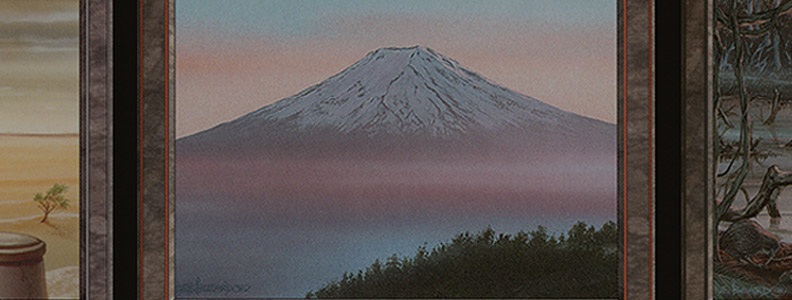Ed Beard Jr. Interview
Welcome to our MTG Artists Interview series There’s no Magic without art.
For today’s interview, we talked with Ed Beard Jr., who worked on the game from 1994 to 2004 and illustrated over 100 Magic cards.
Enjoy!

Hi Ed. You started working on the game in 94. How did it all start?
I was an invited guest at Gen Con TSR 1992 as a comic book/fantasy artist as I was debuting my collectible card set and a game called flights of fantasy, a very simplistic basic role-playing dice-type game but with fantasy art cards that were popular during the 80s and early 90s.
While I was there a couple of representatives from this small company called Wizards of the Coast, which had at the time only had a role-playing book out, came to me inquiring about my illustration work and if I was interested in participating in a new card game that was to be coming out.
They offered $50 and some shares in the company, of course at the time the company had little to no value. I had just recently been taken to the cleaners by another company that went bankrupt and stiffed me for $30,000 or more, so I decided I wasn’t in a gambling mood so I declined the offer.
Obviously, in retrospect, I suck at gambling…LOL because I made one of the biggest financial mistakes in NOT investing I had ever made. The next year at Gen Con 1993 the game came out and it was a huge success they exploded into a five Fortune company.
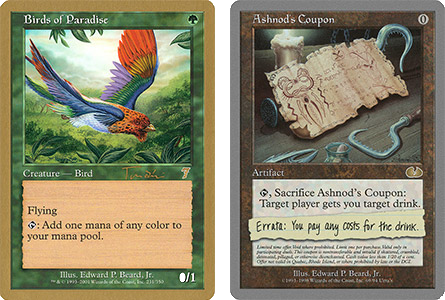
They came back to me and asked me if I would be reconsidering and of course, I said well certainly, “I’ll accept the offer you made for me last year at which time they said oh that offer is off the table now we are only offering $100 per card and a 2 1/2% royalty”. Needless to say, I had already lost in my prior move not wanting to gamble, so this time I said yes!
So that’s how I began the commission work for the elder dragons and the legend expansion which they started commissioning literally in August 1993- 1994.
At what point in time did you first notice the game was a huge hit?
I was at the debut release at Gen Con in 1993 and it was very evident to anyone there that just about everyone was talking about this game.
This year marks Magic’s 25th anniversary. What do you consider to be the secret behind such longevity?
As an illustrator for products long before WOTC / MTG came out and long after through my 39 years as a self-employed illustrator, I have observed many companies come and go and many companies that have been able to stand the test of time.
The key ingredient is a fundamentally strong mechanic and a company that listens to its audience follows the trends and gives the consumer what they want.

For a while in the early 2000’s I witnessed the progressive failure of WOTC at listening to its consumer base. I had a discussion with the then art director, who believed my work was “expected” or “too traditional fantasy” (he pointed out my Birds of Paradise as something that should never be in Magic art).
I pointed out the importance of the diversity of styles and that my so-called “traditional fantasy” had a very large following, after all, I was a fan-favorite artist of the year 2001 in inquest magazine at the time this discussion was taking place.
He explained to me in a variety of examples that regardless of what they did with their product – whether it was the design of the card borders or the change of the overall look and feel of the artwork – the public would buy it because they are simply too invested in it to do otherwise. In general, that phone conversation was all about how he was going to change the face of Magic art direction and that my style is yesterday’s news regardless of my Fan favorite status or what the public might have desired.
This proved to be a very large mistake on their behalf that they quickly realized a few years later. In the end, I decided that there was no longer enough creative freedom nor any tolerance to work with that art director.
When he was no longer working at WOTC, I witnessed a slow return to the very thing that made the product successful across a wide demographic, which was keeping the artwork diversified rather than a streamlined, homogenized look where the color scheme of the entire set looked like it was the same color hue pallet. I have no idea what any of the sets have looked like after Return to Ravnica so I can’t speak to their success or not.
Ed re-imagined Nicol Bolas for The Gathering book, which focuses on the early art done for Magic, and was organized by Jeff A. Menges, who we also interviewed.
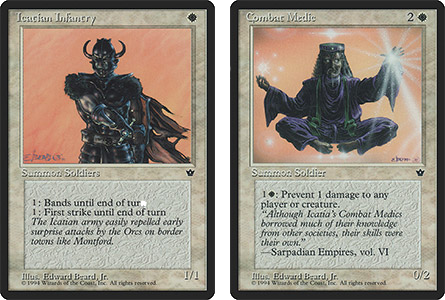
When they allowed for more diversity of styles and color ranges, they found the public to be far more responsive, and they captured a wider audience.
The variety of styles and techniques is also due to the different tangible mediums that were used in the early years. Those tangible mediums allow for an innately and dramatically dynamic different look that we rarely see in the more streamlined digital imagery.
Can you give us a brief description of your painting process?
Ironically, the entire legend set artwork that I did were actually color comps done with colored pencil and ink, they were never intended to be the final illustration. However, the art director was impressed enough with them that he felt I didn’t need to submit anything fully painted and of course myself, not really thinking how huge this game would be. or that it would continue to be around for 25 yrs, I didn’t insist on repainting them as I would’ve done.
For all sets after that, you can clearly see a difference in the medium used, acrylic and airbrush, which was the medium of choice and I still use it today for most of my clients.
I really like your five basic land paintings, I feel there’s a special quietness about them. Do you recall how did they come to be?
The land cards were a unique opportunity. The idea was that they had to be pretty accurate to those countries’ landscapes. Mount Fuji for instance is literally the actual Mount Fuji.
I had not been commissioned to do lands throughout the sets so this was a good opportunity to enjoy a little Bob Ross relaxation which may be what you’re pulling from that as your impression call it the happy little mountain forest swamp and island.
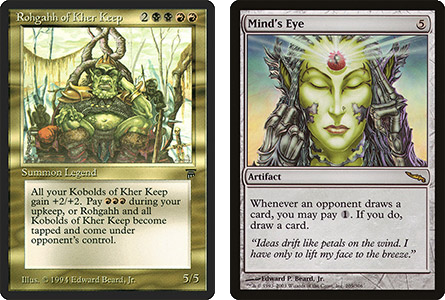
I remember that Psychotog caused an impression on me as a kid. What can you tell us about this painting?
I can remember very distinctly getting the call from the art director saying he had a rush job, that had to be done overnight and FedEx to them overnight. The description I was given was “you know what an ATOG looks like Ed? Now take that and think of a basketball with teeth”.
So I did pretty much just that, but I added the idea of Jack Nicholson peering around the corner grinning at you in that kind of sinister way as he burrows through the Stonewall.
As artists, we were never given the information on the card’s playability, or the mechanic and since this card had not existed in the past there was no reference to know what it would eventually do.
It always amazed me that the pieces that I spent the least amount of time on became the most remembered because of their playability. This card was, as the players would tell me, extremely broken. The card dominated tournaments as we’ve never seen. I can remember going to tournaments or a grande pre-event and having 7 out of 10 cards that I would sign be this card.
Do you recall what were the most challenging cards to paint?
The one that stands out in my mind the most was Avalanche Riders. The reason was that this card was a portrait of one of the champion players, and all they provided me was a poor quality black and white xerox copy about 2 inches tall of his face it wasn’t even in the right position and somehow I had to turn that into his likeness. In the end, he was very happy with it. He eventually purchased the original painting.
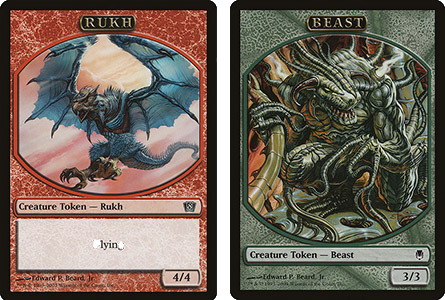
Of the art you made for Magic, can you name some favorites?
They are usually the ones that are least playable, for some reason the most awesome card art always winds up on a common unplayable card.
I would say some of my favorites would be Peer Pressure, Crusading Night, Battle of Wits, Fylgja and Goblin Pyromancer for a little comedy relief.
Is there any Magic-related story/episode you’d like to share with us?
Since I stopped working for the company back in 2004 and after working for the product for 11 years, I always find it amazing that even to this day whether I’m at a comic convention or one of my Renaissance fairs where my gallery shops are, that collectors and players who were just kids back in the early 90s will come into my booth locations, look around and identify a couple of images they remembered from the game when they were kids.
Now they have their teenage children with them who also had played with my cards and still occasionally come across them or know about them due to their iconic nature such as Nicol Bolas or Birds of Paradise.
I am now old enough, and this game has been around long enough to actually see 3 generations of players who’ve known my art as they grew up. That has been a very rewarding experience.
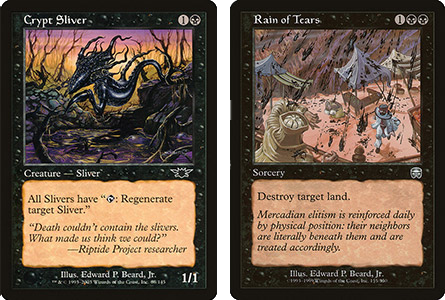
Where can our readers find out more about your work?
I attend a variety of conventions and trade shows each year but the most frequent place that you will find my works and myself attending is my different locations at my Renaissance fairs. I participate in the Tampa Bay area renaissance festival in Florida as well as the Gainesville Hoggetown renaissance fair in northern Florida, the Michigan Renaissance Festival, The Ohio Renaissance Festival, The Tennessee renaissance festival as well as steel city con in April and December.
If you are not in those locations my website has the most up-to-date variety of new art and license products ranging from throw blankets, T-shirts, jigsaw puzzles, figurines and statues, mugs, pint glasses the works
The website is www.edbeardjr.com
Recommended Posts

Adam Paquette Interview
Welcome to our MTG Artists Interview series There's no Magic without art. For this week's interview, we talked with Ad
Read More
Anson Maddocks Interview
Welcome to our MTG Artists Interview series There's no Magic without art. We're very happy to share with you our talk
Read More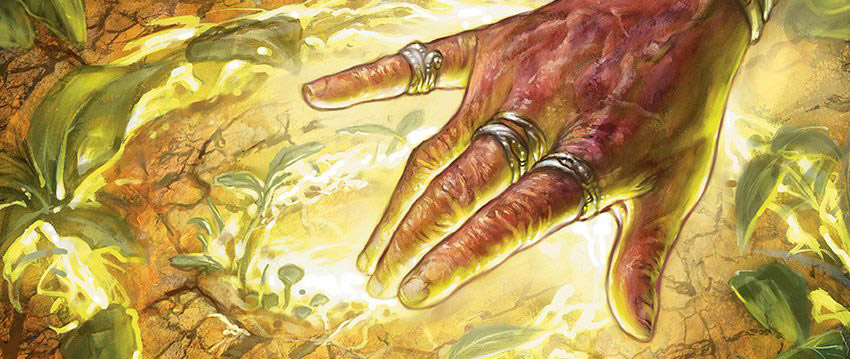
Anthony Palumbo Interview
Welcome to our Artists Interview series - There's no Magic without art - where we talk to artists about their work on
Read More